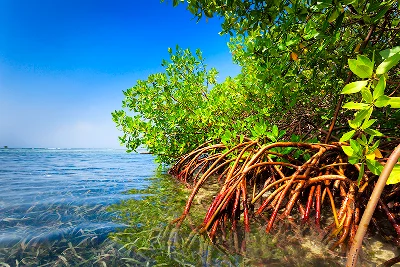Sea plants, also known as marine flora, play a crucial role in our ocean ecosystems. They are not only aesthetically pleasing, but they provide numerous benefits to marine life and our planet as a whole. These plants are specifically adapted to thrive in saltwater environments and come in a variety of forms, including seaweeds, sea grasses, and mangroves.
Sea plants are essential for maintaining the health of our oceans. They serve as important habitats and nurseries for a wide range of marine species, providing them with food, shelter, and protection. They also contribute to the overall stability of coastal areas, acting as barriers against erosion and mitigating the impacts of storms and waves.
Beyond their ecological significance, sea plants have significant economic value. They are harvested for various purposes, such as food, cosmetics, pharmaceuticals, and biofuels. For example, seaweeds are used in sushi, as well as in the production of carrageenan, a common food additive. Additionally, compounds extracted from certain sea plants have shown promising medicinal properties, making them valuable in pharmaceutical research.
However, the sustainability of sea plant resources is of utmost importance. Over-harvesting, pollution, and climate change pose significant threats to these delicate ecosystems. Conservation efforts are thus crucial to protect and restore sea plant populations, ensuring their continued benefits and the health of our oceans.
In conclusion, sea plants are invaluable assets to marine ecosystems and humanity alike. Their roles in providing habitats, preserving coastal areas, and offering economic opportunities cannot be overstated. By recognizing their importance and working towards their conservation, we can ensure the flourishing of sea plant populations and the prosperity of our oceans for generations to come.




